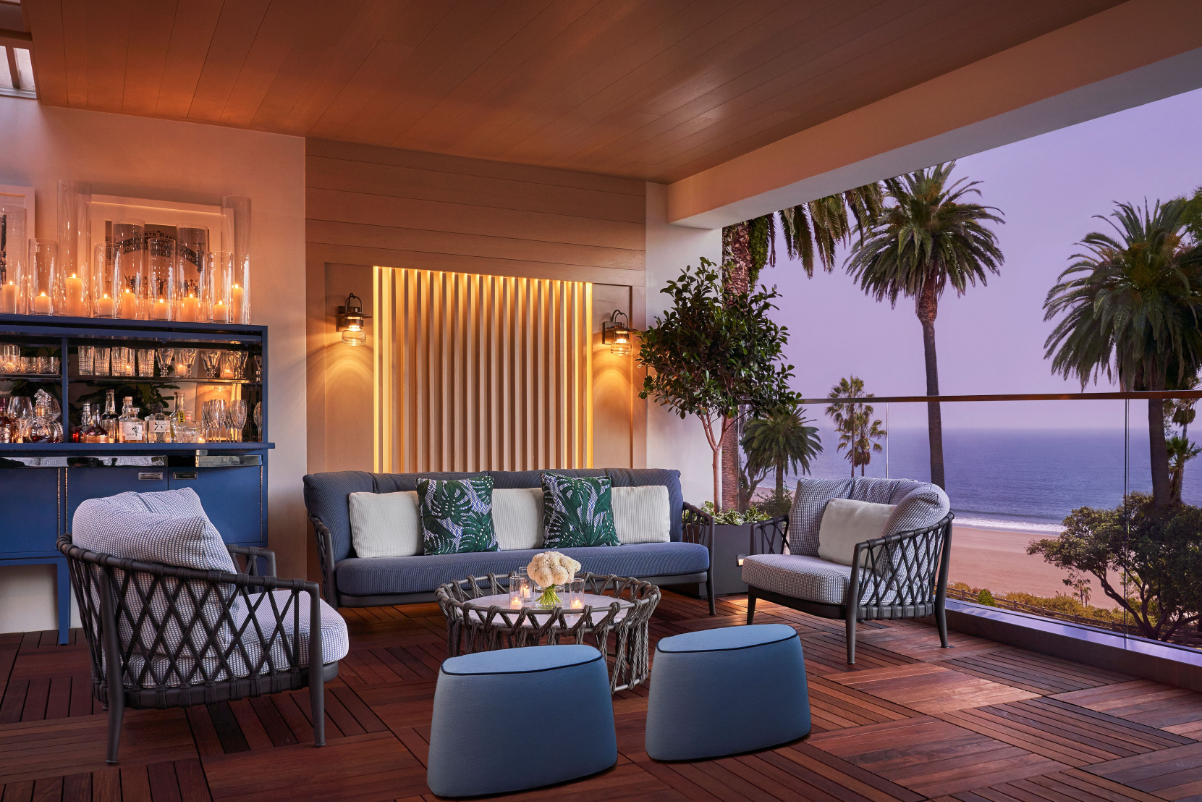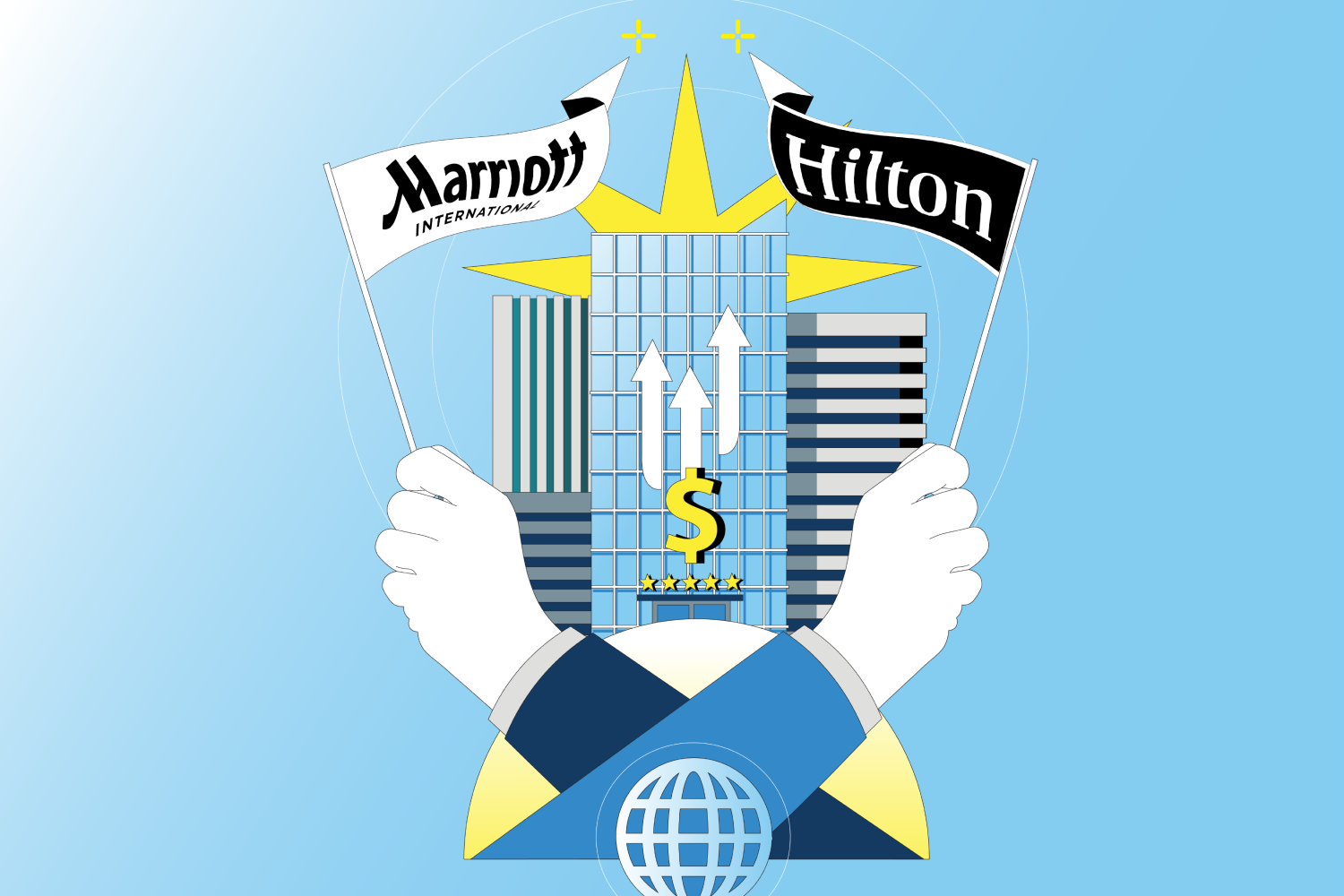Skift Take
Slowdown? What slowdown? Hilton sees the boom rolling on. In other news, the company said it would add a hotel brand in the "luxury lifestyle" segment in the next year or so.
Hilton’s earnings report on Wednesday was the first one from a major hotel group for the second quarter. All eyes were on whether the company saw any cracks in demand. In short: No.
“We had the best booking quarter in our history, ever,” said Christopher Nassetta, president and CEO. “And our position is great for the next year.”
The McLean, Virginia-based owner of 22 brands, such as DoubleTree and Waldorf Astoria, continued to see a strong hunger for travel through 2023 and into early 2024.
About 85% of the company’s business transient revenue comes from road warriors at small-to-medium-sized businesses.
“They’re feeling reasonably good about a soft landing [in the economy] and their businesses,” Nassetta said.
Leisure travel remained way over past highwater marks, he said. There were a few exceptions, such a few markets where the comparisons were tough because the destinations like South Florida had been so super-hot immediately as the pandemic eased.
Hilton’s third big revenue driver is group bookings for conferences and other large corporate meetings. Executives said they see a continued upswell in group bookings by big associations. This segment had been the slowest to come back from the pandemic lows, suggesting that the recovery in group bookings will provide an ongoing tailwind for Hilton.
As the next year unfolds, Hilton will steadily face more difficult year-over-year comparisons. Domestic U.S. demand may level off, while international travel may still rise. Hilton has fewer hotels overseas than its rivals, putting it at a disadvantage.
Early signs of this possible moderation were reflected in Hilton’s decelerating increase in revenue per available room, a key industry measure. Revenue per available room was the number-one most mentioned term on Wednesday’s call, mentioned 101 times.
Second-quarter revenue per available room rose a remarkable 12% year-over-year. But the company forecasted that its third-quarter revenue per available room would rise only between 4% and 6% year-over-year.
More deceleration is expected as patterns return to averages. In 2019, executives thought that full-year systemwide revenue per available room growth of 2% to 3% year-over-year would’ve been a good outcome.
“It’s like we’ve been living a little bit in Bizarro World,” Nassetta said on Wednesday. “But … everything’s getting reasonably close to a normalized environment.”
Robust Hilton Earnings
Hilton has been boosting its revenue while keeping its costs down. It has partly increased profit margins by pricing its rooms assertively — even though these high room rates depressed occupancy in the second quarter by about 4 percentage points from the pre-pandemic highwater marks.
“We feel good about our pricing power,” Nassetta said. “The core pricing of our transient products, whether that’s for leisure transient or business transient, is keeping up with inflation at its current levels.”
In the second quarter, Hilton generated a net income of $413 million from $1.16 billion in revenue (after subtracting revenue it must pass to its managed and franchised properties).
Hilton produced adjusted EBITDA of $811 million — a company record.
“The company is at the highest margins by 800 basis points we’ve ever run at, thus producing the greatest amount of free cash flow in our history,” Nassetta said.
Planning for a New Brand
Nassetta hinted that his team was doing preliminary work on a new brand for the company.
“We don’t have a pure hard brand in the luxury lifestyle space,” Nassetta said. “We will. We’re doing developmental work in luxury lifestyle. I would expect in the next year we’ll launch something in that space to sort of add, you know, to the three brands we have already in the luxury space to give us another shot on goal for luxury opportunities around the world.”
Growth for Newest Hotel Brands
Executives gave updates on Hilton’s three youngest brands: Spark, the brand temporarily named H3, and Tempo.
- A half-year ago, Hilton announced a premium economy brand, Spark. It said it had about 20 expected to open by year-end, with the first one possibly opening in September. That total was beneath the roughly 50 Spark hotels Hilton executives had said to Skift at the launch they hoped to reach this year. Spark has 60 properties signed up without a timetable, and Hilton has talks ongoing for 400 more.
- In the “apartment hotel” space, Hilton in May announced an as-yet-unnamed brand temporarily called H3. It said it had “300 deals under negotiation.”
- The pace of openings for Tempo remained below expectations, but executives argued that that was temporary. “Tempo will be a mega brand,” Nassetta said. “It just got caught up in getting launched a minute before Covid.
Hotel Pipeline
Hilton aims to return to its pre-pandemic rates of expanding its hotel empire. The phrase “net unit growth” was mentioned 56 times on Wednesday’s call, while “pipeline” was mentioned 55 times.
Hilton added a net 11,200 rooms to its network in the quarter, reflecting the company’s strongest quarterly signings in its history.
Executives said they expected net unit growth for 2023 to be about 5%. That’s below the approximately 6.5% net unit growth it enjoyed in 2019. But executives said they expected to expand their portfolio by between 5% to 7% next year.
“We have more rooms under construction than any other hotel company,” Nassetta said.
Hotel Loyalty: 165 Million Members
Hilton claimed that it had the fastest-growing hotel loyalty program. It enjoyed a 20% year-over-year growth in membership to 165 million members.
Despite being a larger program than it was pre-pandemic, its pace of growth stayed high. In comparison, during the pre-pandemic second quarter of 2019, Hilton grew its loyalty program by more than 20% year-over-year to 94 million members.
New Co-Branded Credit Card Deal
Co-branded credit cards have become more critical to hotel companies, which have seen how the products have benefited airlines by encouraging loyalty and generating fees.
On Friday, American Express and Hilton announced a new 10-year deal for their long-standing set of co-branded credit cards. Hilton executives didn’t disclose much but said that the terms were more favorable financially for the company. The popularity of the cards gave the hotel company some negotiating power.
“Total spend [by card users] has been more than two-thirds higher than in 2019,” Nassetta said.
Daily Lodging Report
Essential industry news for hospitality and lodging executives in North America and Asia-Pacific. Delivered daily to your inbox.
Have a confidential tip for Skift? Get in touch
Tags: brands, earnings, future of lodging, hilton, hotel development, hotel earnings
Photo credit: XR Hotels & Resorts, Oceana Santa Monica, west of Los Angeles. Source: Hilton.

